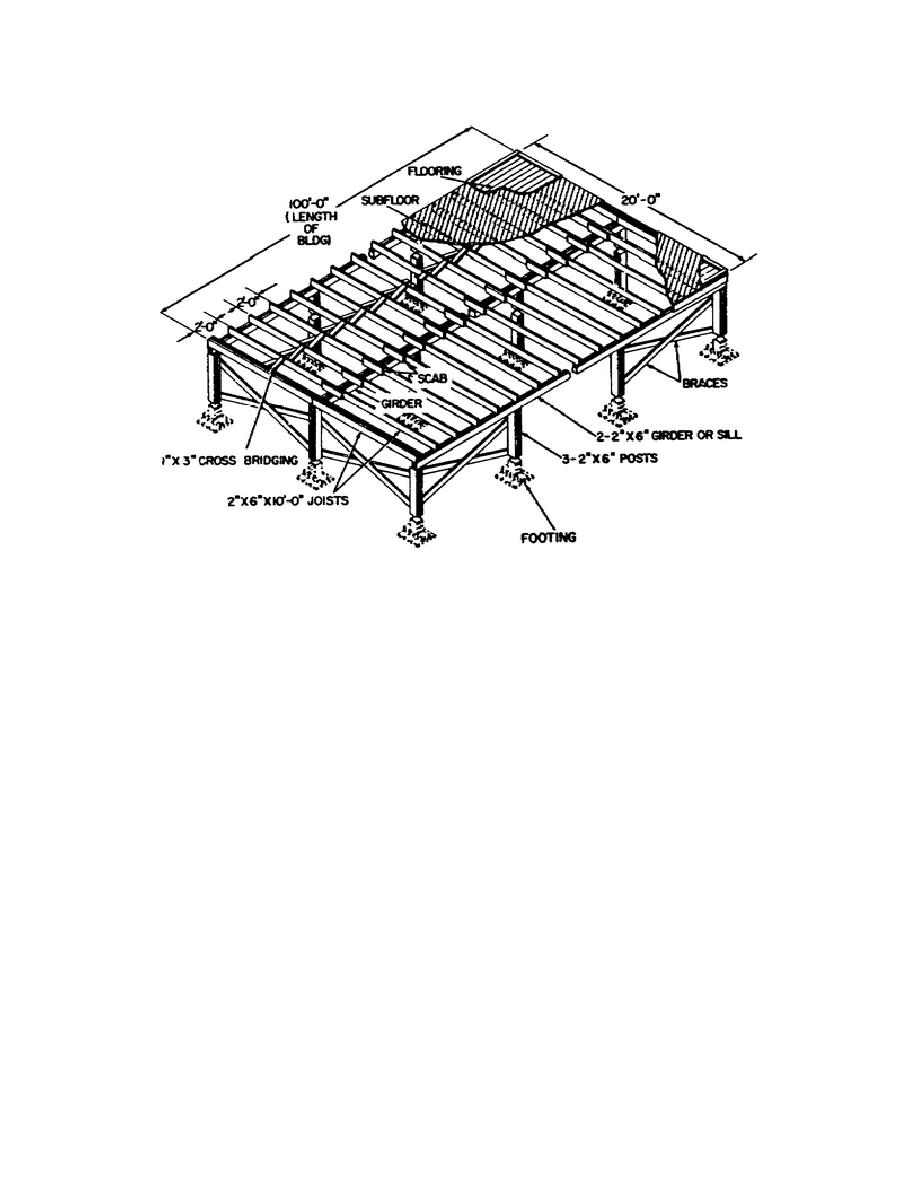
Figure 1-7. Substructure nomenclature.
a. Straight butt joint. Thin joint is
e. Half-lap joint. This joint is constructed
formed by bringing the square-cut end of one piece
by cutting away a portion (usually half) from the
against the face of another (1, 2 fig. 1-8). Screws
thickness of each of two pieces and joining them s
will hold such a joint most securely, but for framing,
that the cut-away portions overlap in a
butt joints are toenailed with or 10-penny nails. Nails
complementary manner to form a jot (6, fig. 1-8).
should always be slanted because nails driven into
Variations of the half lap include cross lap (7, fig. 1-
wood parallel to the grain have very little holding
8), middle lap (8, fig. 1-8), and mitered half lap (9,
power.
fig. 1-8).
b. Oblique butt joint. This joint is
f. Dado and rabbet joints. A dado is a
farmed by bringing the end of one piece, cut on the
square-bottomed, two-sided groove cut in wood, and
oblique to form the desired angle, against the face of
a rabbet is a square-bottomed, one-sided groove or lip
another piece to which it is to be joined (3, fig. 1-8).
cut in the end of a piece. Principal joints include
Nails should be toenailed and the use of too many or
dado joint (1, 1-9), rabbet joint (2, fig. 1-9), dado-
too large nails avoided.
rabbet joint (3, fig. 1-9), and stopped dado (4, fig. 1-
9).
c. Miter butt joint. This joint is formed
by bringing the mitered ends of two pieces together.
g. Dovetail
and
mortise-and-tenon
The end of each piece cut to the same angle (4, fig. 1-
joints. These locked joints give added strength but
8). The miter joint is extensively used in trim work
require additional work and greater skill. The most
around windows and doors, but its principal use in
common locked joints are lap dovetail (5, fig. 1-9),
framing is for rafter junctions at roof peaks.
through single dovetail (6, fig. 1-9), open mortise-
and-tenon (7, fig.
d. Plain lap joint. This joint is formed by
laying one piece over anther and fastening the two
together with bolts, screws, or nails (5, fig. 1-8).
1-11



 Previous Page
Previous Page
